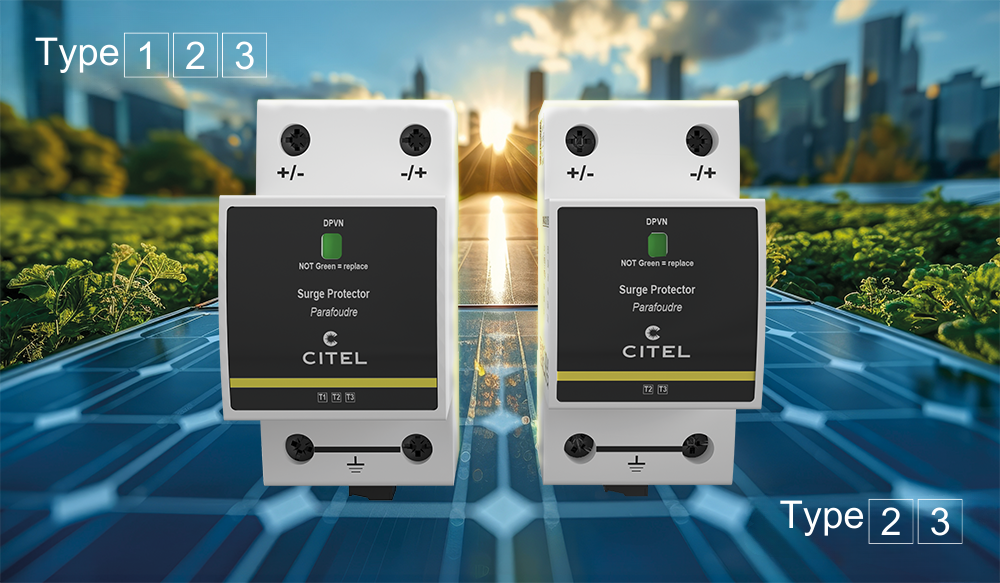Every electrical network operates at a specific nominal voltage. The network can be subjected to a voltage higher than its nominal voltage due to disturbances: this is referred to as overvoltage and surge voltage when the impulse is very short.
One of the possible causes of failure of electrical or electronic devices is overvoltage. Users of electronic devices as well as telephone and data processing systems must keep their systems operational, even if lightning strikes could cause short-term voltage spikes on power supply and data lines.
Protection Cubed: DEKRA Certifies DPVN Surge Protectors with Type 3 Protection Properties!
DEKRA has subjected the surge protectors of the DPVN series to testing according to IEC 61643-31. This standard describes the performance and safety requirements for surge protectors that may be used on the DC side of PV installations. Furthermore, this regulation specifies the procedures for testing and rating the surge protectors. The tests conducted by DEKRA with the DPVN devices revealed that the protectors not only meet the requirements for device types 1 and 2 but also fulfill the performance and safety specifications for type 3 surge protectors. This makes the DPVN series the world’s first PV combination protectors with T3 properties!
This exceeding of normative requirements is made possible by CITEL’s new separation technology, the CTC-Technology (Central Thermal Control). The CTC technology is a patented innovation by CITEL experts and sets new safety standards in the surge protection industry with its sensitive response behavior, integrated arc barrier, and all-pole disconnection. Another positive feature of the CTC technology is the significantly reduced heat radiation: in the event of activation, DPVN devices remain measurably cooler than protectors with conventional separation methods.
In line with these remarkable results, DEKRA has certified the DPVN protectors with T3 properties. This certification applies equally to MOV and VG variants. The markings of the protectors will be changed in a running change process.
Voltage spikes can be caused by a variety of factors. Here are some of the most common causes:
- Lightning strikes: Lightning strikes near power lines or buildings can cause massive voltage spikes that can spread through the power grid and damage electronic devices.
- Switching operations in the power grid: When large electrical loads are switched on or off, sudden changes in current flow can generate voltage spikes. This can occur in industrial environments or with large household appliances such as air conditioners or refrigerators.
- Defective or old electrical systems: Outdated or poorly maintained electrical systems can be unstable and cause voltage spikes. This is a common problem in older buildings.
- Short circuits: A short circuit in an electrical system can cause a sudden surge in voltage that affects other parts of the system.
- Power outages and restoration: When power is restored after an outage, voltage spikes can occur as the sudden return of power can overload the system
- Electrostatic discharge (ESD): This occurs when electrical charges build up and then suddenly discharge, such as through friction or contact with conductive materials. ESD can damage sensitive electronic components.
- Inductive loads: Devices such as motors, transformers, and fluorescent lamps can generate voltage spikes when switched on or off, as they represent inductive loads.
>> to the ESKA - Surge protection catalog <<
>> to the Citel - Surge protection catalog <<

